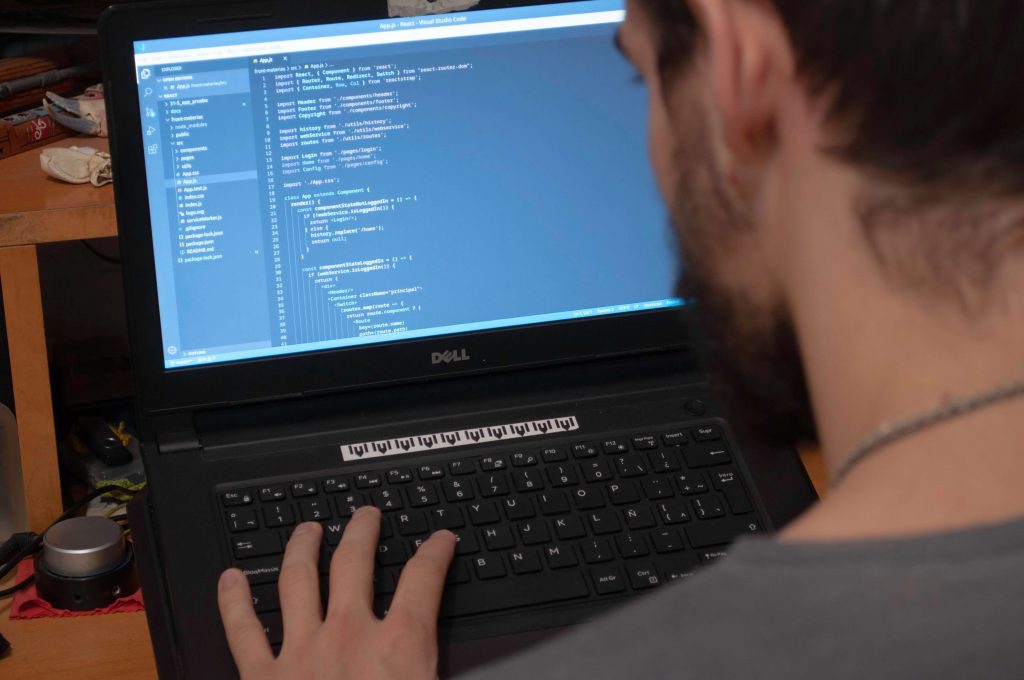If you’re wondering how to learn JavaScript, you’re not alone. JavaScript is one of the most popular programming languages in the world. From websites to mobile apps, this language powers many of the digital tools we use every day.

Whether you’re a student, a beginner in coding, or just curious about how websites work, JavaScript is a great place to start. This guide will walk you through everything you need to know about learning JavaScript in a simple, easy-to-understand way.
What is JavaScript?
JavaScript is a programming language used to make websites interactive. It works in your browser and lets websites do things like show pop-up messages, display live updates, or react when you click a button.
Think of HTML as the skeleton of a webpage, CSS as the style (colors, fonts), and JavaScript as the brain that makes everything work together. Without JavaScript, websites would be dull and static.
Why Should You Learn JavaScript?
Here are some strong reasons to start learning JavaScript:
- In-demand skill: Almost every modern website uses JavaScript.
- Career opportunities: Web developers, app developers, and game creators often use JavaScript.
- Beginner-friendly: It’s easier to get started with compared to many other programming languages.
- Large community: Millions of people use JavaScript, so help and tutorials are easy to find.
Step-by-Step Guide on How to Learn JavaScript
1. Start with the Basics
Before jumping into complex coding, it’s important to understand the basic terms:
- Variables: Containers for storing data.
- Functions: Blocks of code that perform tasks.
- Loops: Repeat actions automatically.
- Conditionals: “If this, then that” logic.
- Arrays & Objects: Ways to store multiple items.
Start with small goals, like printing your name or doing basic math. This helps build confidence.
2. Choose the Right Learning Resources
You don’t need expensive classes to learn JavaScript. Here are some beginner-friendly resources:
- FreeCodeCamp.org – Offers interactive lessons.
- W3Schools.com – Easy to follow tutorials.
- MDN Web Docs (by Mozilla) – Trusted and in-depth.
- YouTube – Many channels provide step-by-step videos.
Pick one and stick with it until you master the basics.
3. Practice Writing Code Daily
The best way to learn JavaScript is by doing it. Set aside 30 minutes to an hour each day. Use simple projects to test your skills:
- Make a calculator
- Create a to-do list
- Build a quiz game
Coding regularly helps your brain remember what you’ve learned.
4. Use Online Code Editors
You can start coding without installing anything. Try:
- CodePen.io
- JSFiddle.net
- Replit.com
These tools let you write and test JavaScript in real time. You’ll see instantly how your code affects the page.
5. Learn JavaScript in a Logical Order
It’s easy to get overwhelmed. Here’s a suggested learning path:
- Syntax and Variables
- Data Types (Strings, Numbers, Booleans)
- Functions and Scope
- If/Else Statements
- Loops (for, while)
- Arrays and Objects
- DOM Manipulation
- Events (clicks, input)
- APIs and Fetch Requests
- ES6 Features (let, const, arrow functions)
Each topic builds on the last, so don’t skip ahead too fast.
Tips to Stay Motivated While Learning
Set Small Goals
Don’t aim to build a full website on day one. Instead, try writing a function that adds two numbers or changes the text on a page.
Join Coding Communities
Being part of a group can help you stay on track. Try:
- Reddit’s r/learnjavascript
- Stack Overflow
- Discord coding servers
Celebrate Small Wins
Each time your code works, celebrate! These little victories will push you forward.
What Tools Should You Use?
You don’t need much to get started. Here are a few essentials:
- Text Editor: Try Visual Studio Code (free and beginner-friendly)
- Web Browser: Chrome or Firefox is great for testing code
- Browser Developer Tools: Press F12 to see what’s happening behind the scenes
Common Mistakes Beginners Make
1. Trying to Learn Everything at Once
Take your time. JavaScript is huge. Focus on one concept at a time.
2. Not Practicing Enough
Watching tutorials is great, but unless you write the code yourself, you won’t really learn it.
3. Comparing Yourself to Others
Everyone learns at a different pace. Don’t feel bad if someone else seems faster. Keep going!
What Comes After the Basics?
Once you’ve mastered the foundations, you can explore more advanced topics:
Learn JavaScript Frameworks
- React.js: For building user interfaces
- Vue.js: A beginner-friendly framework
- Node.js: Lets you run JavaScript on the server
Frameworks help you build real apps faster.
Build Real Projects
Apply what you’ve learned by building something real. Try:
- A simple blog
- A weather app using an API
- A basic game like tic-tac-toe
Real projects boost your portfolio and confidence.
Should You Learn JavaScript Before HTML and CSS?
If you’re brand new, it’s helpful to learn HTML and CSS first. They form the structure and design of web pages.
Once you understand those, JavaScript will make more sense because you’ll see how it adds power to your pages.
Can a 10th-Grade Student Learn JavaScript?
Absolutely! Many students start learning JavaScript in school or on their own. If you can understand simple math and logic, you can learn how to code in JavaScript.
The key is to start slow, stay consistent, and not give up.
Final Thoughts on How to Learn JavaScript
Learning JavaScript doesn’t have to be hard or expensive. With the right mindset, tools, and practice, you can start coding your own interactive websites in no time.
Start small, stick with it, and you’ll be amazed at what you can create.
